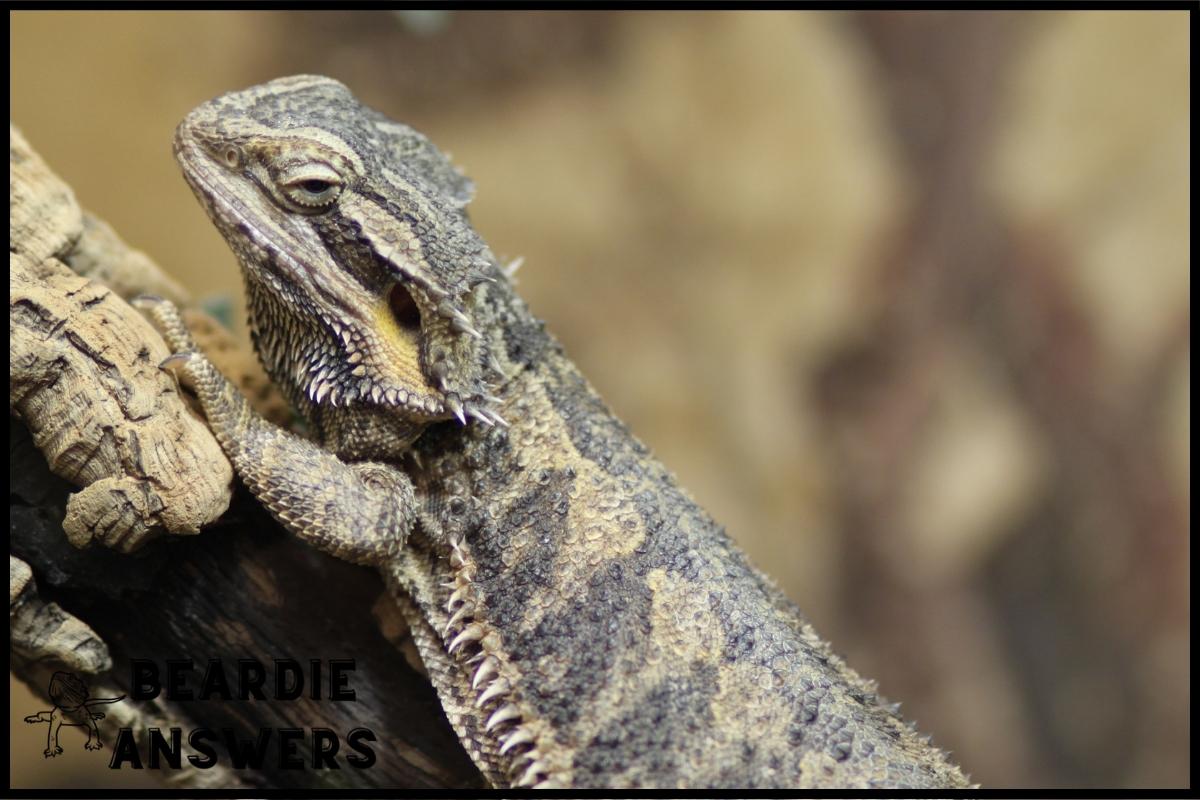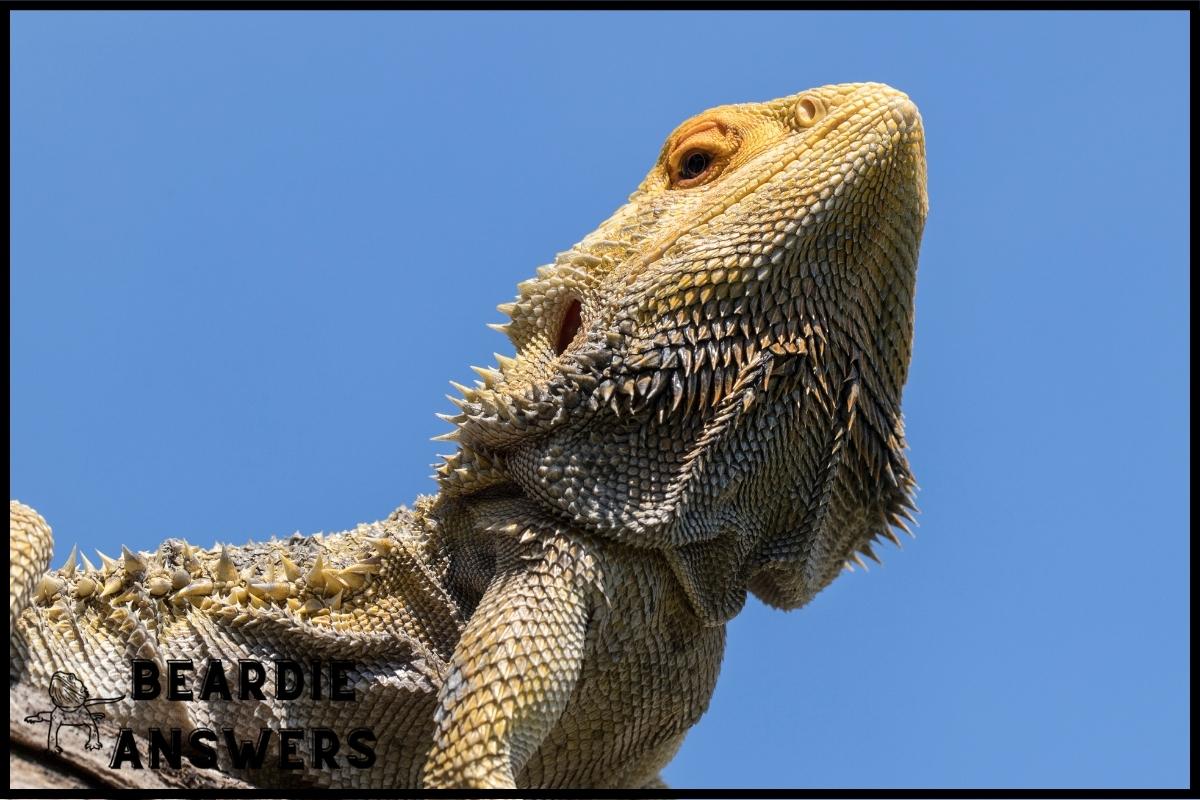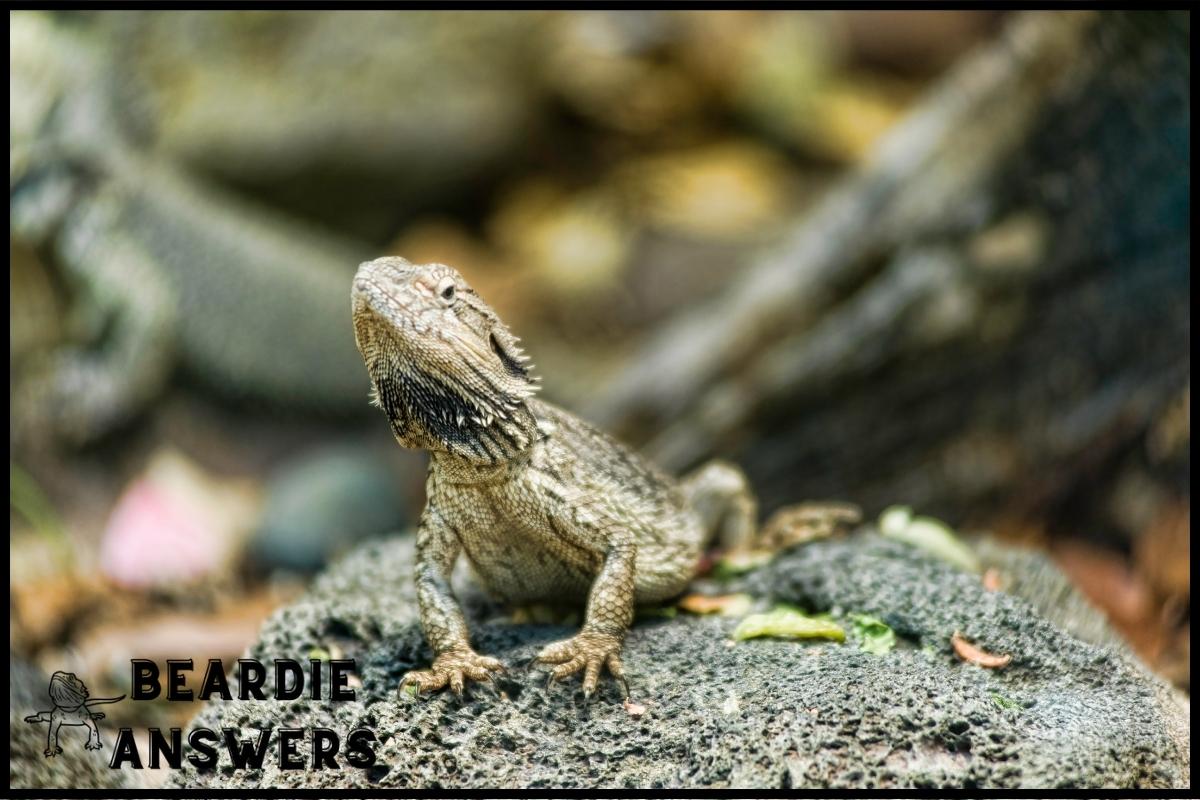To provide the best care for a bearded dragon, you will need a suitable tank, heating and lighting equipment, a substrate for the tank, a variety of nutritious foods, a water bowl, and decorations to create a stimulating environment. It is important to research the specific needs of bearded dragons before bringing one home to ensure you are prepared to provide proper care.
What You'll Learn
Choosing An Appropriate Tank
The purchase of the appropriate tank for a bearded dragon is an important decision that requires careful consideration. Size, materials, and cost should all be taken into account when buying a tank for your scaly friend. An enclosure too small can prevent them from feeling secure and inhibit their growth while one too large may lead to higher costs and wasted space.
When shopping around for the best options, it’s worth noting that glass tanks are not ideal as they do not provide enough air circulation. Instead, look at acrylic or mesh terrariums with a screen lid which will promote adequate airflow throughout the environment.
When considering size, think about how much room your beardie needs to move around comfortably; remember they grow quickly so always opt for something larger than you anticipate needing initially!
Pricing also plays an important factor in purchasing the perfect home for your reptilian companion. With some research you can find affordable enclosures without sacrificing quality – just make sure you check reviews before committing to buy anything.
All-in-all, taking these factors into account when selecting a tank will ensure both you and your Beardie have everything necessary for proper care and comfort. Moving forward, setting up heating and lighting equipment is an essential next step…
Setting Up Heating And Lighting Equipment
I’m gonna talk about temperature regulators, bulbs, and UVB lamps for setting up heating and lighting equipment for a bearded dragon.
Temperature regulators are essential for maintaining the right temperature in the tank, while bulbs and UVB lamps provide the necessary light and UV rays for the reptile.
It’s important to get the right combination of these components to ensure your bearded dragon is comfortable and healthy.
Temperature Regulators
When it comes to caring for a bearded dragon, temperature regulators are key.
You’ll need thermostats to control the heating and lighting in your vivariums so that you can provide an optimum environment for your pet.
With proper monitoring, you’ll be able to make sure temperatures don’t become too hot or cold which could put them at risk of becoming ill or suffering from stress related issues.
Without the right equipment, maintaining their health can become difficult – so investing in the right tools is essential!
Bulbs
Once you have the thermostats set up, it’s important to get the right bulbs for your vivariums.
UVB bulbs and heat lamps are essential, as they provide the necessary lighting and warmth.
These will help ensure that your bearded dragon is able to regulate its body temperature correctly, which can be difficult in a natural environment.
So make sure to invest in good quality bulbs so that you’re providing them with optimal conditions.
That way, you can keep your pet healthy and happy!
Uvb Lamps
When it comes to UVB lamps, the intensity of the bulb is key.
You’ll need a lamp that has enough strength for your bearded dragon to get all the benefits from the light and heat.
Don’t skimp on quality; you want one with high-quality components so it lasts longer and provides better coverage.
Your selection of bulbs should also take into account their wattage output – if it’s too low, your pet won’t be able to absorb much UVB radiation.
So make sure you do some research before investing in any lighting equipment!
Picking The Right Substrate
Having the right heating and lighting equipment for your bearded dragon is essential. Now that you have all the necessary components, it’s time to pick out a suitable substrate.
Substrate is an important aspect of any reptile enclosure as it provides a safe habitat for them to live in and can even aid with their digestion when chosen correctly.
When selecting substrate, look for something that is non-toxic and allergen free. Bearded dragons need UVB emitting light which helps synthesize vitamin D3 for calcium absorption so make sure there are no reflective materials like sand or gravel as this could cause eye irritation or other issues.
Instead opt for paper towel liners or artificial reptile carpets made from natural fibers such as coconut husk fiber; these substrates help maintain humidity levels in the tank while also providing additional safety since they are easy to clean up if needed.
Now that you know what kind of substrate works best, the next step is providing nutritious food for your pet dragon! Reptiles require balanced diets full of vitamins, minerals and other nutrients to stay healthy.
This means looking into commercial options such as freeze-dried insects, pre-packaged pellets and canned foods designed specifically for reptiles.
Taking some time to research different diet types will ensure your beardie gets everything they need nutritionally without overfeeding them accidentally.
Providing Nutritious Food
Feeding your bearded dragon is an important part of taking care of it. It can be a rewarding experience and you should enjoy the process, but there are also some rules to follow in order to make sure that they get everything they need nutrition-wise. To ensure that your little friend stays healthy, here’s what you need to know:
- First, establish a regular feeding schedule for them. This will help maintain their metabolic rate and keep them from overeating or under eating.
- Secondly, supplement their diet with vitamins and minerals if necessary. You can find vitamin supplements at pet stores or online that are specifically designed for reptiles like bearded dragons.
- Lastly, choose nutritious meals for your beardie. A balanced diet should include dark leafy greens such as kale and collard greens, insects such as crickets or mealworms, fruits such as apples or blueberries, vegetables like carrots and squash, and commercial reptile food pellets.
By ensuring that you provide your beloved pet with quality meals on a consistent basis while meeting all its nutritional needs, you’ll have nothing more to worry about!
Now let’s move onto setting up a water bowl so that our lizard friends stay hydrated throughout the day…
Setting Up A Water Bowl
Once you have provided nutritious food for your bearded dragon, the next step is to set up a water bowl. Bearded dragons need access to fresh drinking water at all times and should be given different sources of water temperature throughout the day. This can come from misting or soaking in shallow warm baths as well as providing cool water in their bowls.
Make sure that the water isn’t too hot or cold; it should always remain around 70-75 degrees Fahrenheit. In addition to having clean, filtered drinking water available, beardies also benefit from being able to soak in shallow baths to assist with hydration and shedding old skin cells.
As part of this process, it’s important to make sure that there are no sharp edges inside the tank that could injure them while they bathe. It is also essential to add enough warm (not hot) dechlorinated water so that it covers your beardie up to its shoulders when sitting upright. Additionally, provide a few minutes of supervised bathing time before allowing your dragon back into its habitat.
Now that your bearded dragon has been provided with the necessary nutrition and had an opportunity for some therapeutic soaking sessions, it’s time for adding decorative touches! Live plants can help keep humidity levels elevated in order to create a more natural environment for your pet lizard – plus they look great too!
Adding Decorative Touches
Many people may think that because bearded dragons are low-maintenance and require minimal care, there is no point in accessorizing their tank with decorations. However, adding some decorative touches to the enclosure can be beneficial in several ways.
Not only will it make the dragon’s habitat look more attractive, but decorating also helps create a stimulating environment for your pet. Here are some ideas for decorating a bearded dragon tank along with tips on how to properly accessorize.
When it comes to decorating ideas for a bearded dragon’s tank, terracotta pots or cork bark can provide good hiding places for them as well as creating an interesting display. Live plants are also great options – they not only give off oxygen and absorb carbon dioxide like real plants do, but they also add color and texture to the enclosure. Rocks and wood pieces can further spruce up the tank while providing climbing opportunities for your pet.
When picking out these types of items though, be sure to inspect everything beforehand so you don’t end up bringing home any potential toxins or sharp edges which could harm your beardie.
It’s important to remember that less is more when accessorizing a bearded dragon tank – overcrowding its living space will cause too much stress and anxiety leading to health issues down the line; plus having too many things around makes cleaning difficult since dirt can accumulate quickly between all those nooks and crannies!
Start small by finding just one or two eye-catching items then build from there until you get something that looks aesthetically pleasing yet still provides ample room for activity within the enclosure.
Conclusion
Having the proper environment for your bearded dragon can mean a world of difference in their health and overall quality of life.
By giving them an appropriate tank, installing heating and lighting equipment, picking the right substrate, providing nutritious food, setting up a water bowl, and adding decorative touches you are ensuring that they will have all they need to thrive.
With these components taken care of, you can sit back and watch as your pet enjoys its new home with happiness and contentment.
You’ll be glad you took the time to give them what they need!

Hi! My name is Bryan, I am the “one behind the words” here are BeardieAnswers.com. I believe that providing quality care and nutrition is the best way to ensure the health of your pet. Every beardie is special and deserves the best care and attention. If you have questions about your bearded dragon, please don’t hesitate to ask! View My Full Author Page




